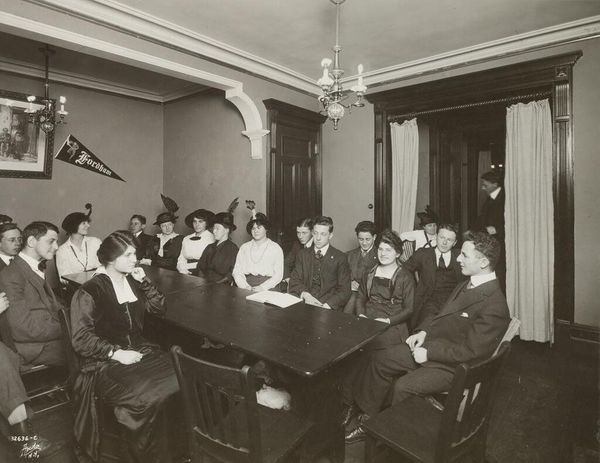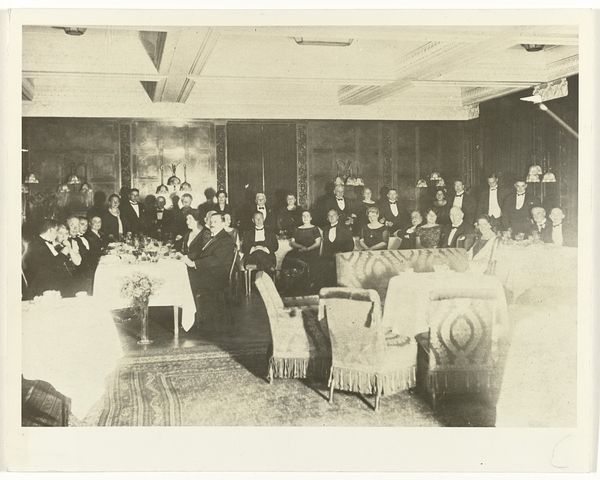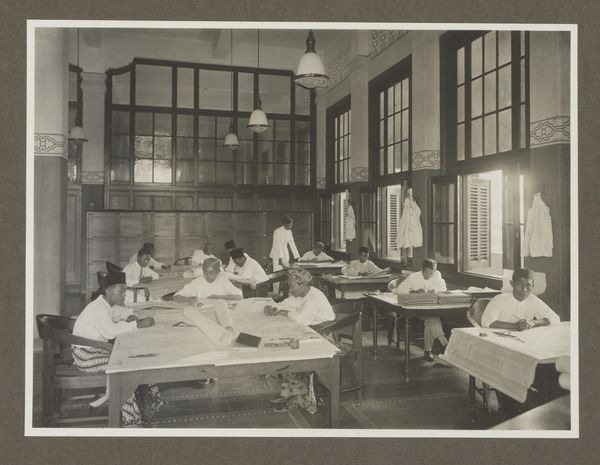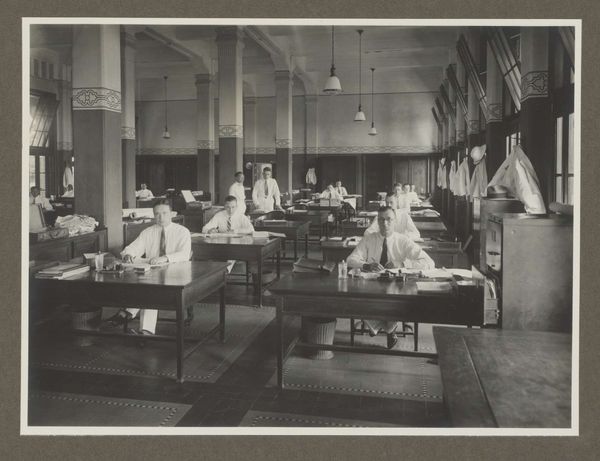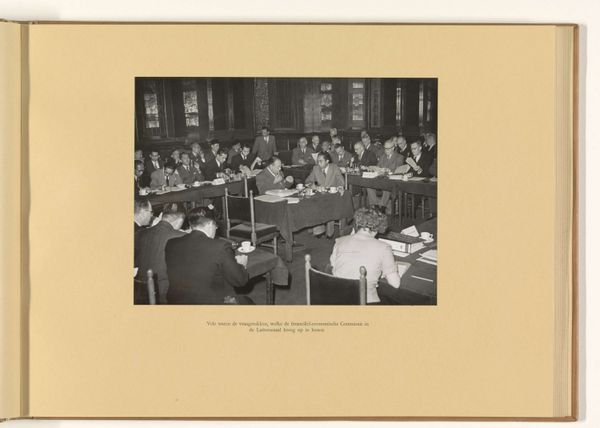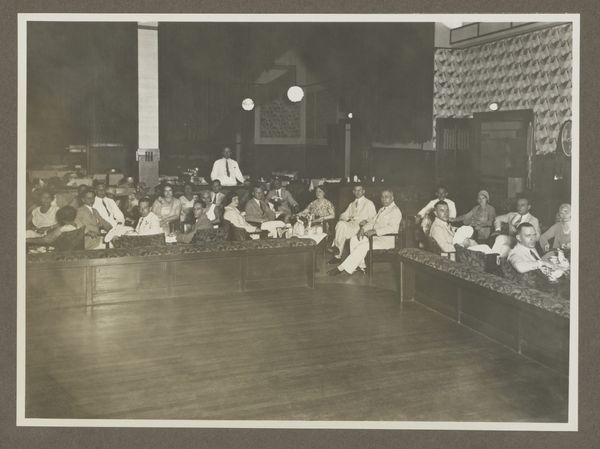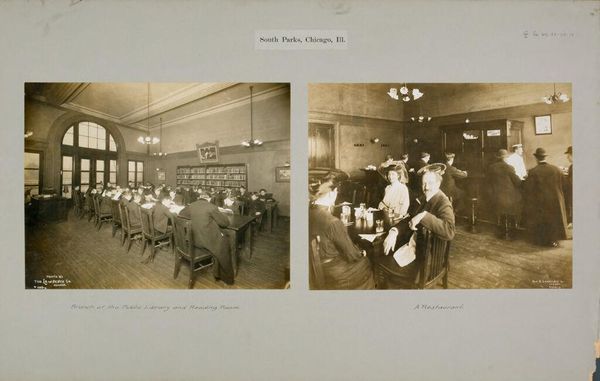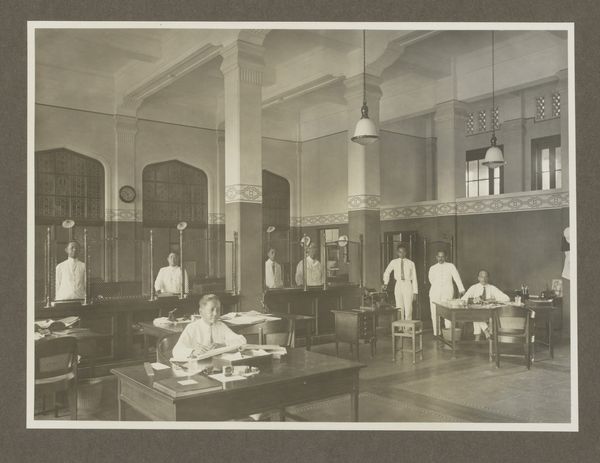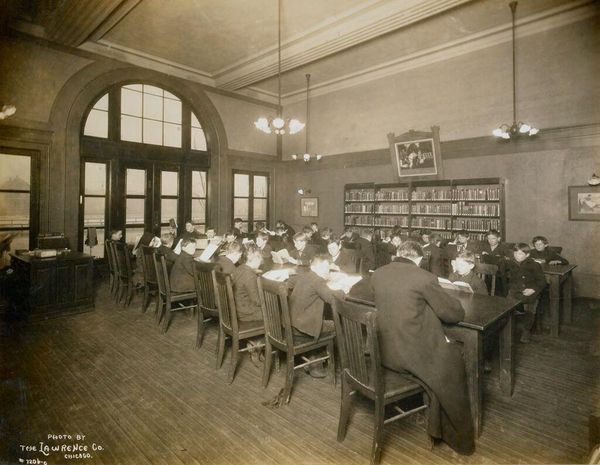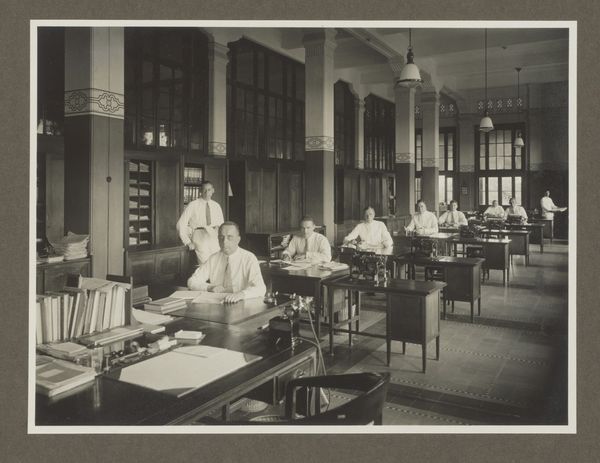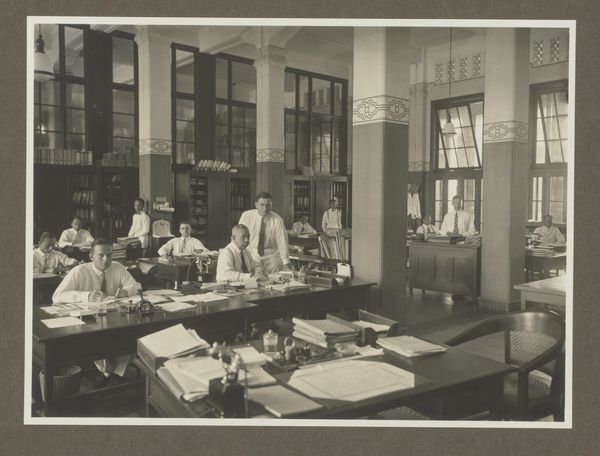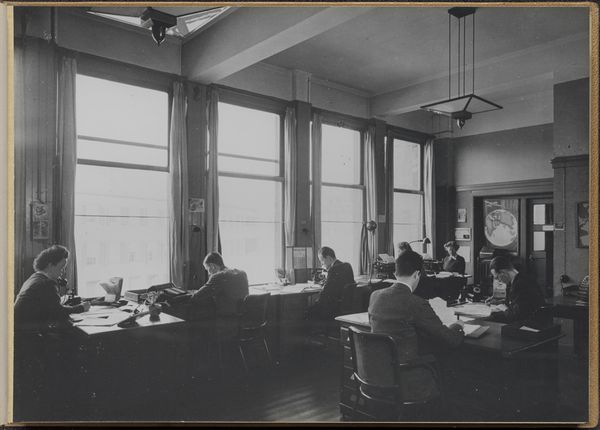
photography, gelatin-silver-print
#
portrait
#
asian-art
#
photography
#
group-portraits
#
gelatin-silver-print
#
genre-painting
#
modernism
Dimensions: height 117 mm, width 165 mm
Copyright: Rijks Museum: Open Domain
Editor: This is "Bijeenkomst van regenten van Midden-Java," a photograph by Otto Hisgen taken in 1930. It's a gelatin silver print. I'm struck by the formality and the sheer number of people in this portrait. What’s your interpretation of it? Curator: As a materialist, I see this work primarily as a record of a very specific labor and production process. Look at the gelatin silver print itself. The materials—the silver halides, the gelatin binder, the paper substrate—they are all commodities produced through industrial processes linked to colonial economies. How does that impact our understanding? Editor: That’s a really interesting point. It connects the image to the economics of the time. But what about the photograph’s subject? Curator: The composition reinforces a hierarchy of labor and materials. We see the “regenten,” local rulers presumably paid through a colonial administration, but their portrayal hides the work they do. Who were these men, and what function did they provide to the colonial economy? The architecture surrounding them must have involved both native and international sources of raw materials and labour too. Editor: So you're suggesting the photo itself becomes part of that colonial system, not just a depiction of it? Curator: Exactly. The means of production – the photographic process, the studio, the distribution of the image – are all implicated in the exploitation and representation of colonial subjects. This is no simple group portrait, it’s part of the mechanism of power. Even those lamps are relevant, considering the source materials, where those lightbulbs may have come from… Editor: That's a pretty sobering perspective, and helps me view photographs from that period in an entirely new way. Curator: Thinking about it this way changes our reading of art; this work demonstrates how material realities and historical conditions are fundamental to interpreting cultural production. Editor: I agree, and this really illustrates the importance of looking beyond just the aesthetic qualities.
Comments
No comments
Be the first to comment and join the conversation on the ultimate creative platform.
